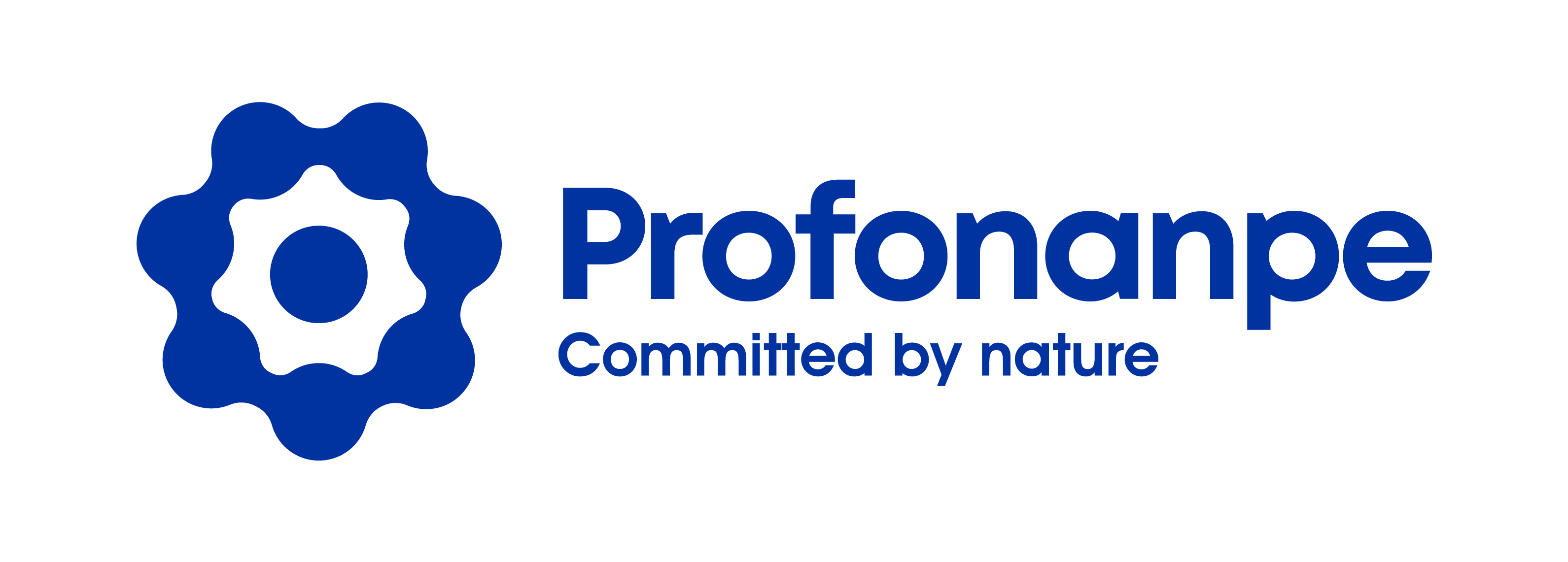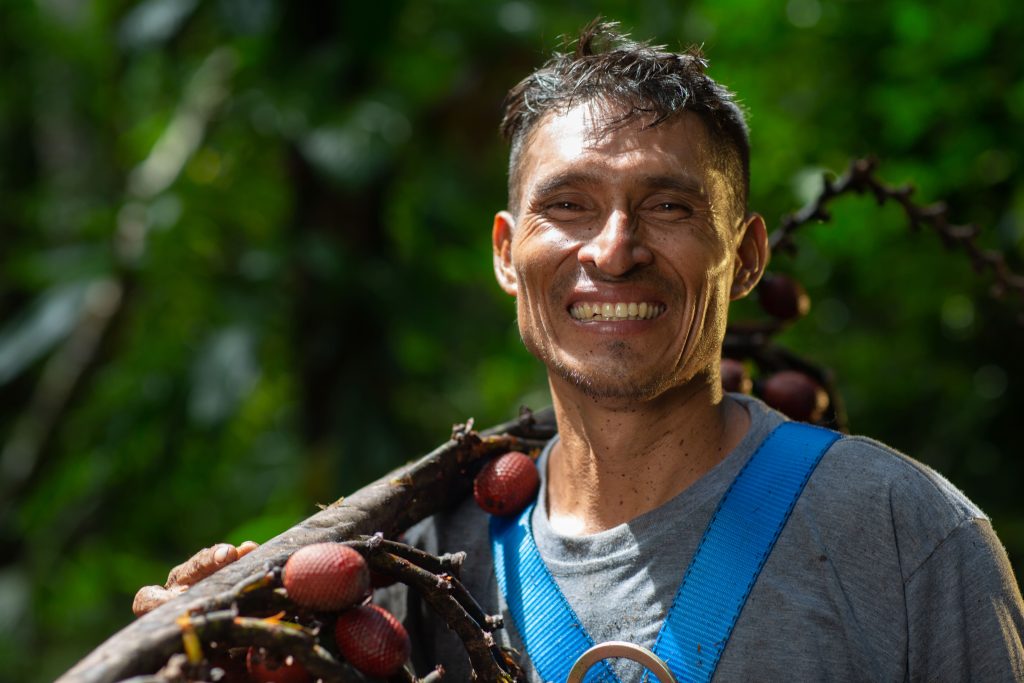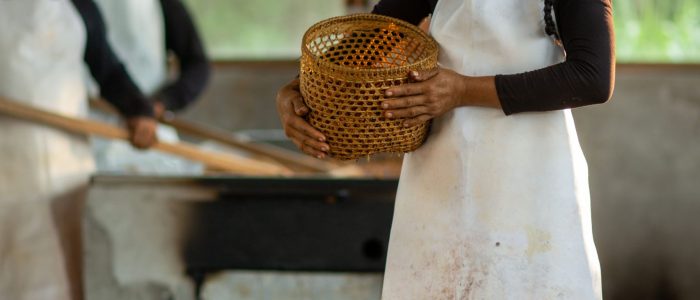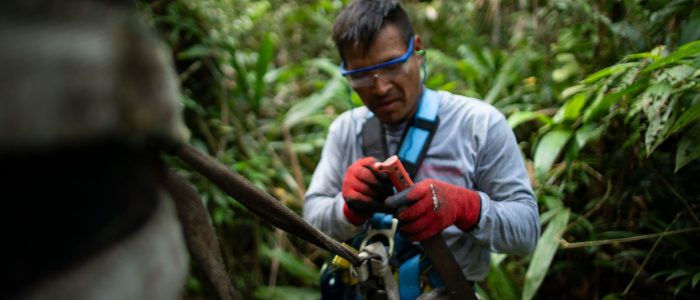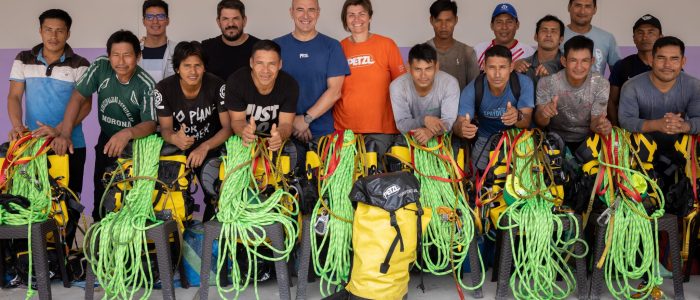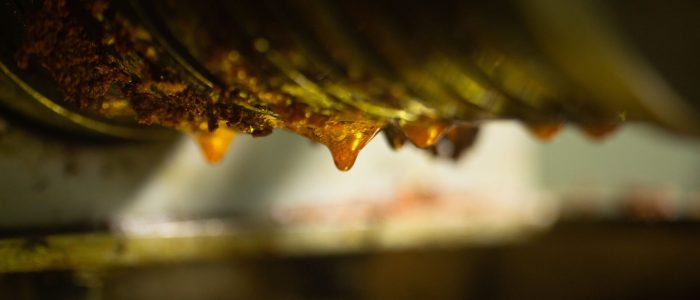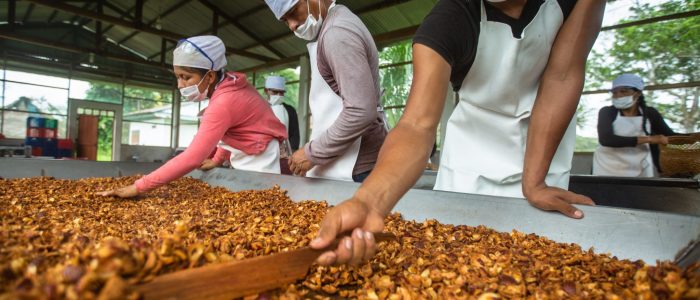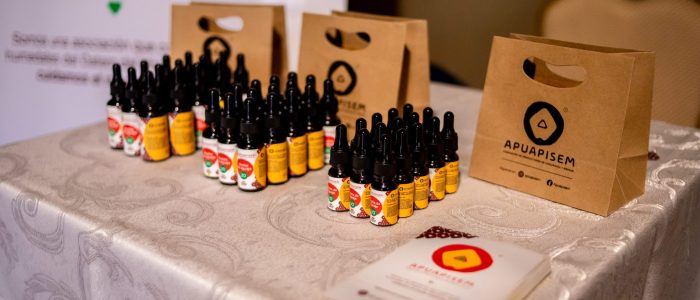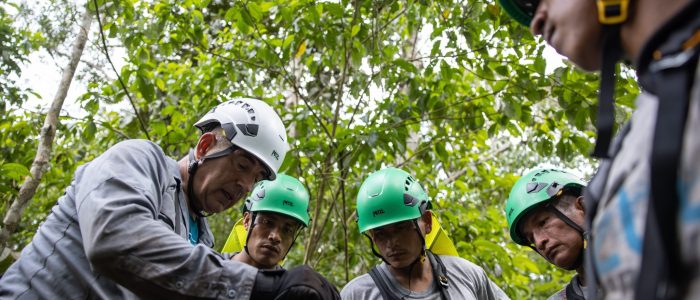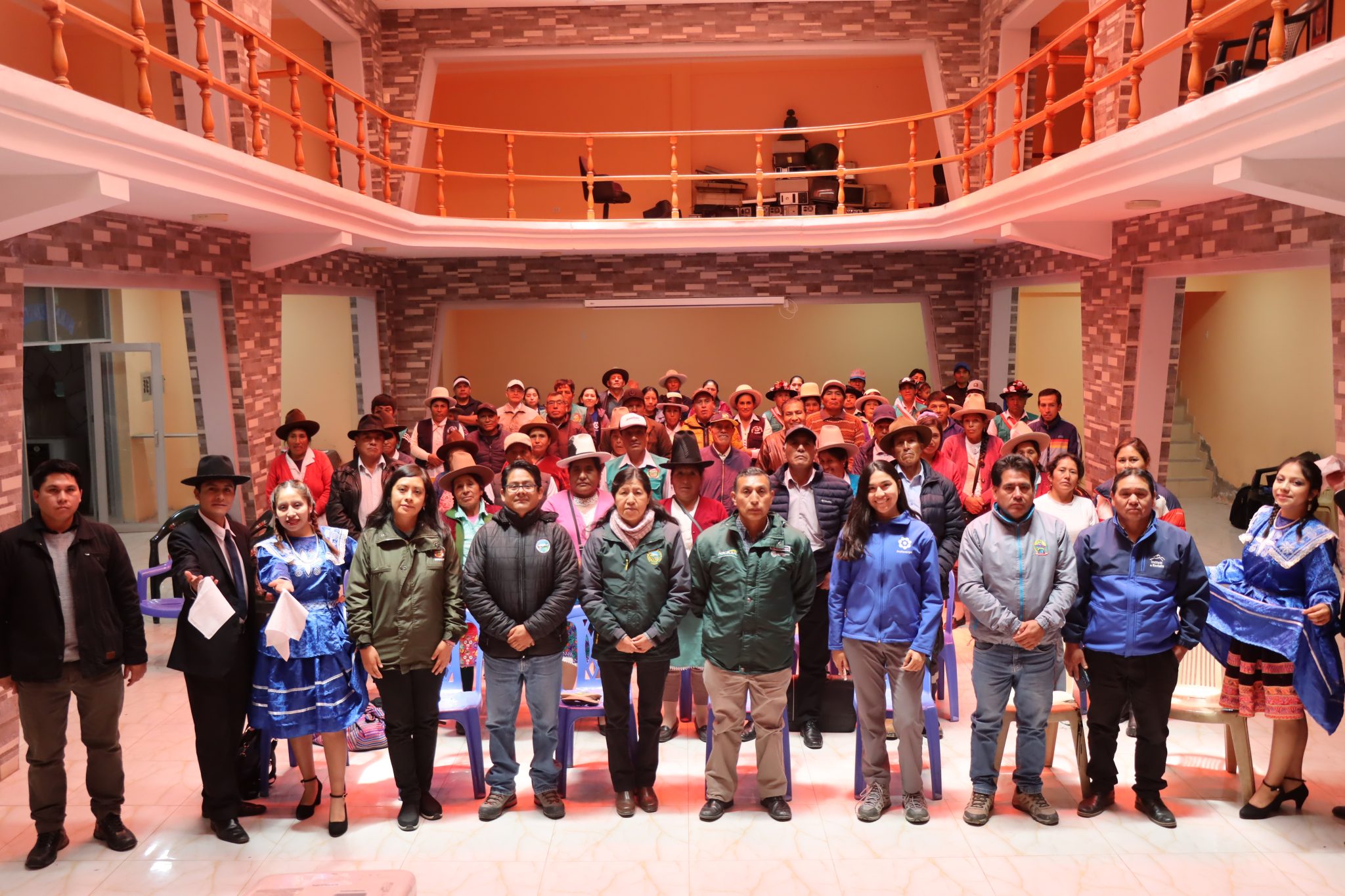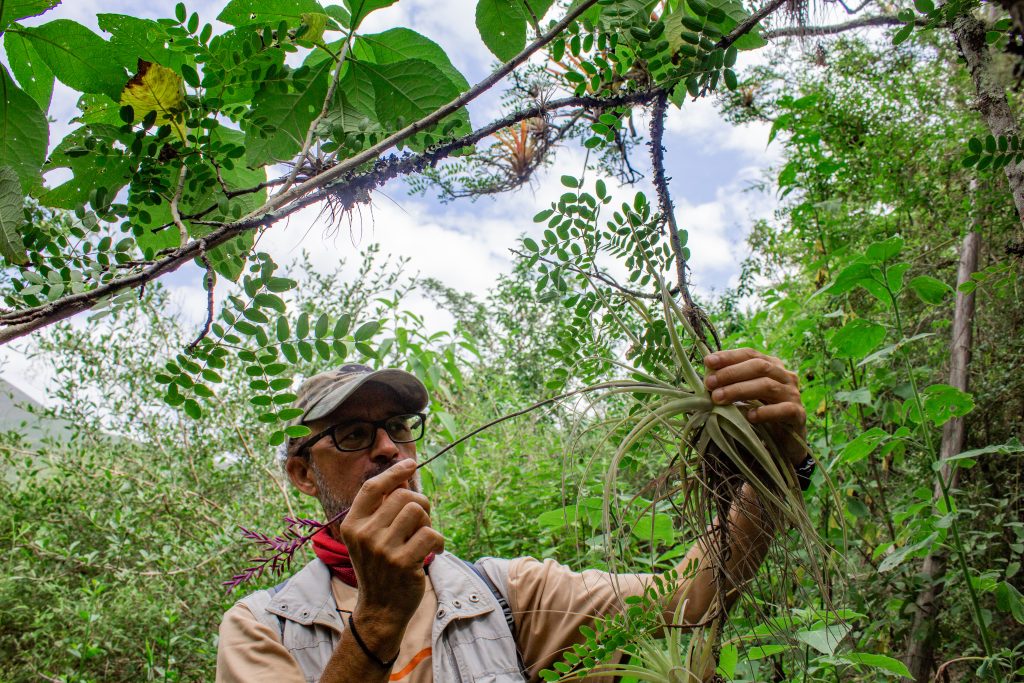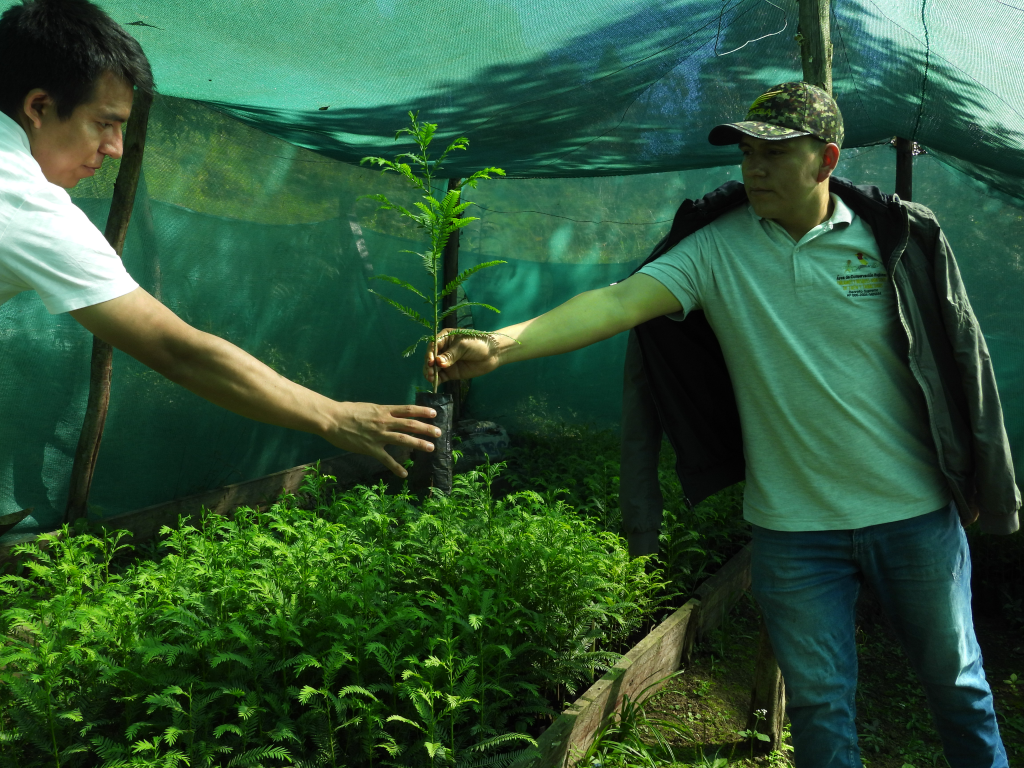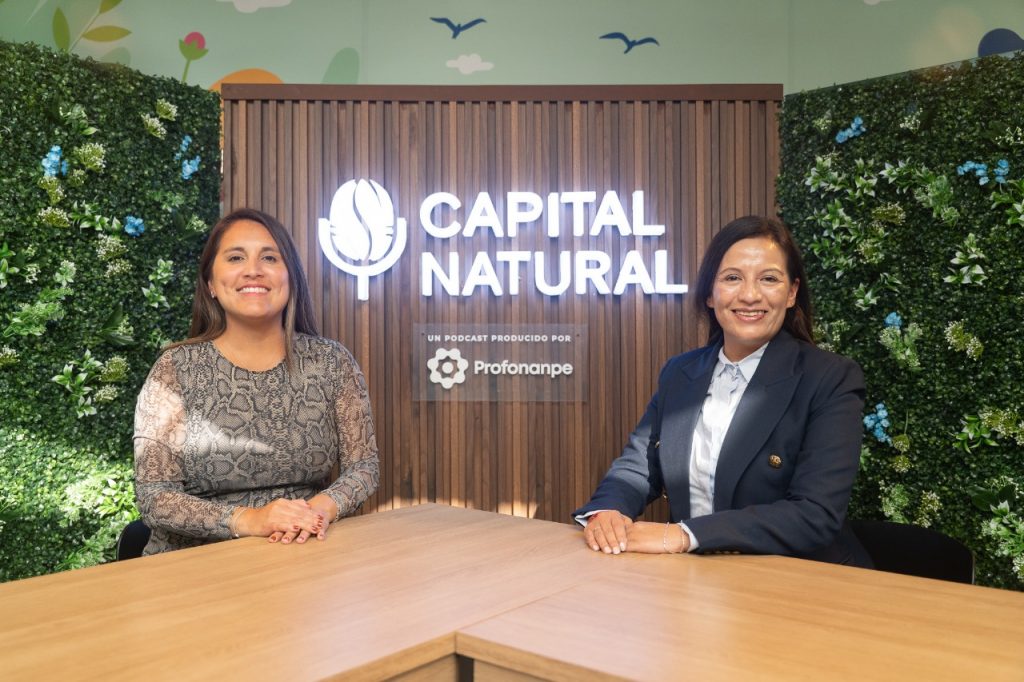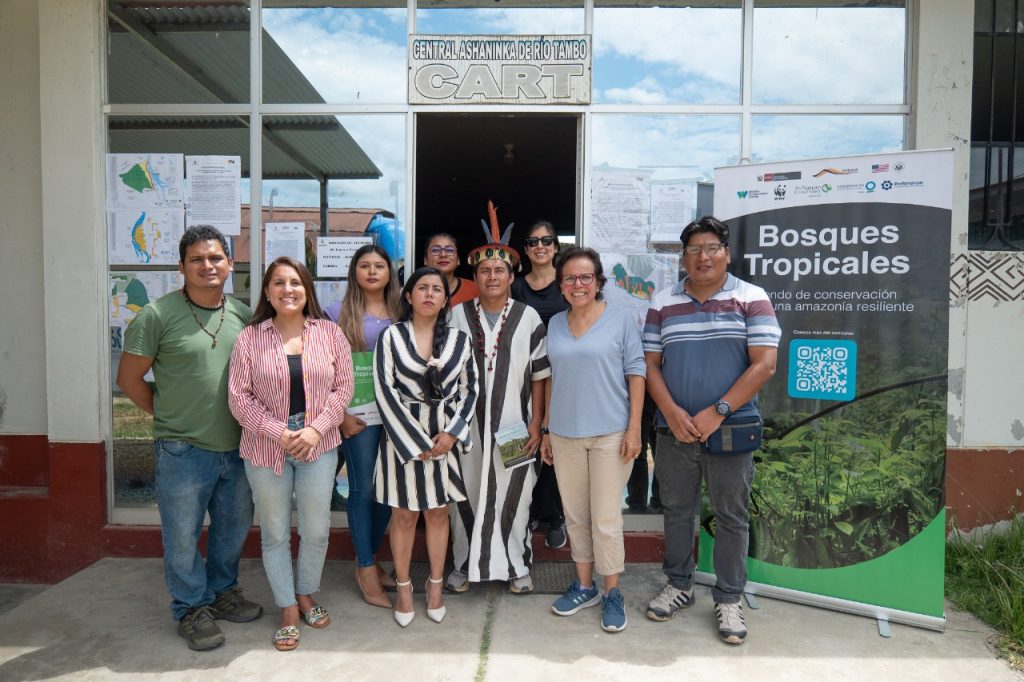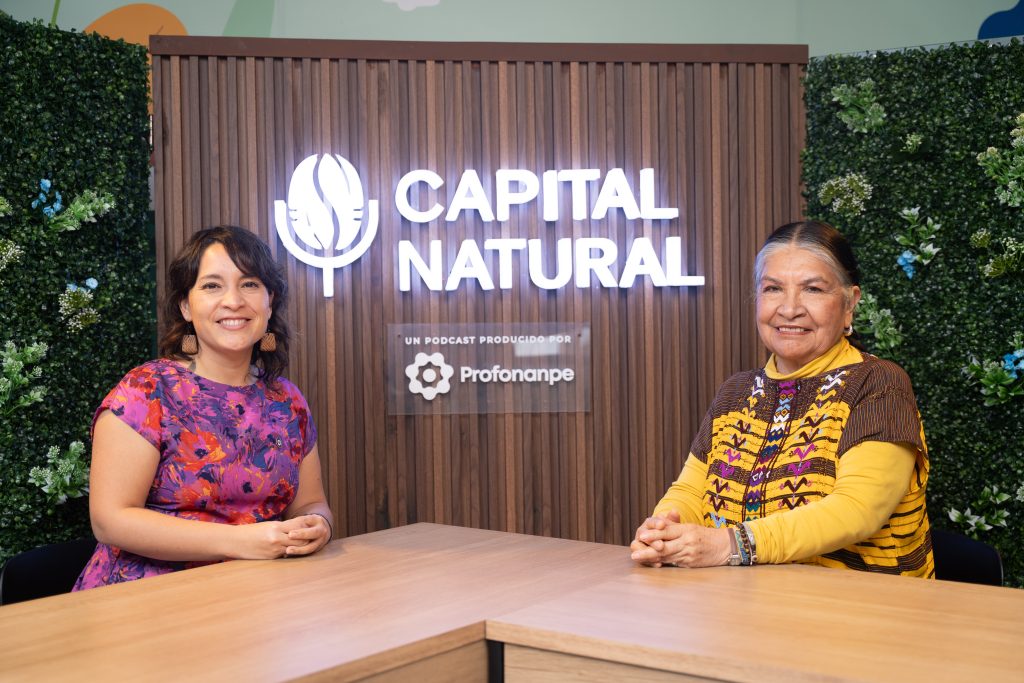In Puerto Díaz, on the banks of the Pastaza, the Chanchari family extends a warm welcome to us. A few Kichwa households live in this little village. They cultivate pineapple, which they sell in Ushpayacu, the district headquarters of Pastaza, on a parcel of land that is little more than two hectares. They also produce cassava and other crops. The community also gathers the aguaje fruit on a seasonal basis; this is done by chopping down the palm tree used for production. But in the community of Puerto Díaz, people have been climbing palm trees instead of felling them for more than a decade. A rope system allows climbers to ascend to the summit of the aguaje palm trees, which can reach heights of up to 35 metres.
Soon after we arrive, one of the most well-known climbers in the area, Segundo Chanchari, demonstrates how to ascend a palm tree for us. The ground becomes swampy a few yards from the dwellings, and the plant sediment starts to seep into our boots. The scientific name for the aguaje plant is Maurita flexuosa, and this is its primary habitat. The highest concentration of aguaje palms in the Peruvian Amazon may be found in these forested wetlands in the province of Datem del Marañón and in general, in Loreto region.
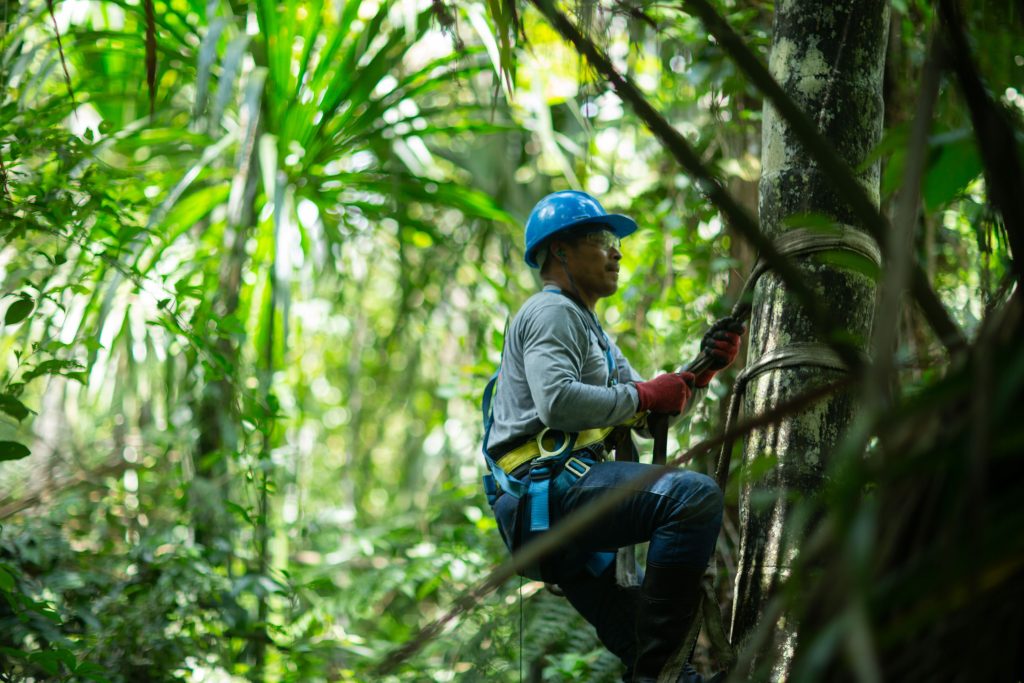
As he dons the necessary gear—a helmet, spur-adorned boots, a harness, and a belt—and sets it on the nearly smooth trunk of the palm tree, Segundo leads us to it and describes the harvesting process. With tremendous physical exertion, he is able to ascend up through the trunk using the belt and the motion of his arms and legs. He can reach the summit in little more than five minutes, thanks to his expertise and talent, and use a handsaw to chop one of the berry-filled bunches.
It takes more time and effort to climb a palm tree than it does to just down it, as Segundo and his father Adegundo Chanchari explain to us right after they descend the tree. They further say that they can cut between 50 and 100 palms a day with an axe or an electric saw while harvesting with harnesses only yields 20 to 30 palms per day. However, the latter approach naturally maintains the plant’s life. Both ecologically and economically, this is critical.
The biggest tropical peatlands in the western hemisphere, the Pastaza Fan´s ecosystem (Abanico del Pastaza), is made up of more than 75% palm forests. The hamlet of Puerto Diaz is surrounded by a collection of wetlands and lake systems that have an estimated carbon pool of over 6.7 billion tonnes of carbon dioxide equivalent in their soils. Preserving this carbon stock in the form of roots and other organic materials is essential to halting climate change. The total amount of carbon stored in the province of Datem del Marañón is about seven times more than the carbon emissions produced by all of South America combined in 2021.
The Aguaje palm is a species that dictates much of the structure of the swamp forest due to its extensive predominance in the area. It also modifies and stabilises essential ecological processes and creates locally stable conditions for other species. For instance, after being purified, palm leaves can hold a lot of water, which is then progressively released. High concentrations of dissolved organic carbon and other elements required for water bodies’ metabolic activities can be found in the water produced by wetlands. Because the palms control water cycles or provide food for them with their berries, fish, birds, and mammals rely on the ecological services provided by the palms. Several kinds of monkeys live in the dead trunks and canopy, along with parrots, macaws, and bats. Furthermore, essential to the aguaje fruit is the diet of the sajinos and sachavacas, which are a source of protein for native communities.
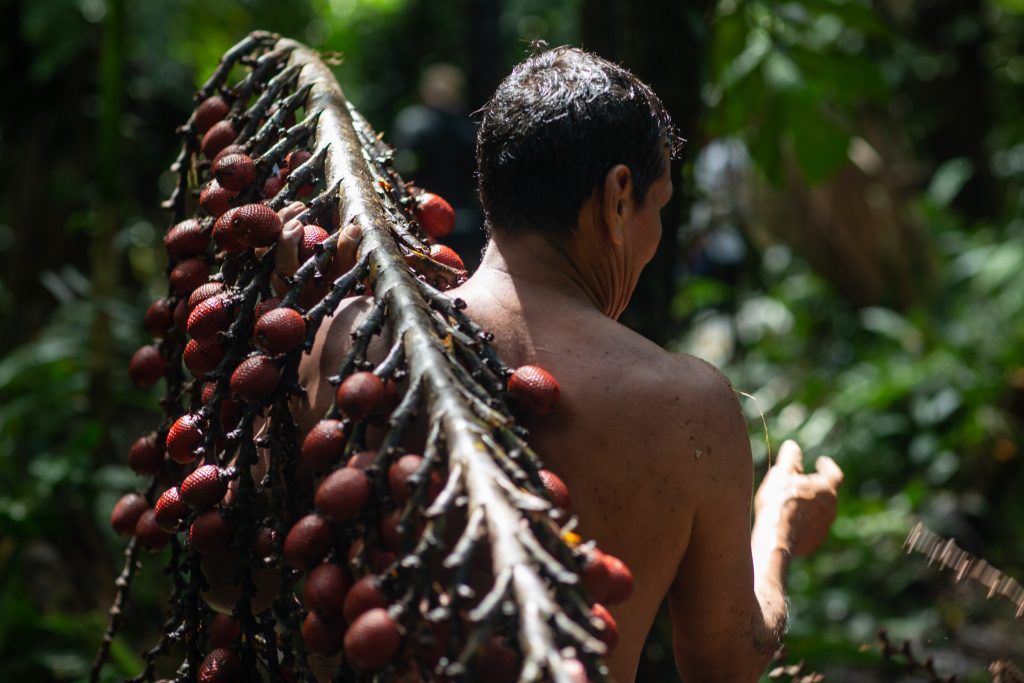
The Chanchari were persuaded of the advantages of ascending the palm trees upon observing climbers from Pacaya Samiria National Park, who went by the moniker of Los Maquisapas, after the monkey species found in the Amazon. Adegundo claims, «There were no climbers back then; everything was done with an axe or a chopstick. However, the good news was delivered to the Puerto Díaz community by Los Maquisapas, who had been collaborating with Sernanp, Profonanpe, and non-profit groups to alter the aguaje crop. The year was early in the 2010s. “At that time, one of the first climbers came with prehorns, who became known as Los Maquisapas,” – according to Segundo – “An individual from Pacaya Samiria named Arvildo. He taught me. So, I travelled to his territory and trained there as well. Since then, I have continued to practise in an effort to get better at what I do and I’ve improved until now”.
After the plant reaches maturity, when it is between 7 and 10 years old, climbing the palm permits an extraction cycle of 40 to 50 years. However, short-term financial incentives are impeded by long-term ones because of strong market demand. Removing palms yields immediate benefits. In the Loreto area, an estimated 2130 aguajes are felled per month, and 1400 hectares of aguajales are destroyed annually; these numbers have been rising since the 1990s. Depredation has an impact on both the resource’s sustainability and the local economy. Aguaje palms are dioecious plants, meaning that male specimens must pollinate the females for fruit to be produced. Barren woodlands result from the species’ drastically reduced ability to reproduce once the prior palms are cut down. According to one study, for every female specimen there are 3 males in Loreto.
Residents of Puerto Diaz established an association in collaboration with the Building the Resilience of Wetlands in Datem del Marañón with the goal of promoting the sustainable gathering of palm fruits, mostly aguaje, but also unguragui (Oenocarpus bataua), which are black berries high in Omega 9. Aspromag, an organisation with a sorbet manufacturing factory in Puerto Industrial Community, is the buyer of the produce at a set price. Segundo Chanchari states, «We are pleased with our business, but it has not been easy. It has to be brought up in public forums and assemblies. We’ve encouraged conversations. However, people were eventually persuaded. In order to gather the aguajes that are closer, the community has now adapted to scaling. The more you cut, the further you have to go to find the aguaje afterwards. With scaling, however, we don’t have that problem».
Through their efforts, Puerto Díaz is proving that it is feasible to harvest palm fruits sustainably, guaranteeing the preservation of the Pastaza Fan’s ecosystems (Abanico del Pastaza) as well as long-term revenue. Specifically, the Chanchari family has been influential in the neighbourhood by providing neighbours and neighbouring community people with training. Segundo Chanchari states, «We are training people; the shortage of tools is the problem. We have to travel to the capital, Lima, in order to produce the equipment needed to obtain the specific waistbands. Although there are waistbands available, this style is not what we require. But we are at that point. Once they [the harnesses] are made, we donate them to the people so they can harvest».
But the Chanchari is concerned about one thing. The fruits’ availability has been rapidly declining over the last few years. “There hasn’t been much flowering this year – Segundo adds, seeming worried – the aguaje production is low right now. It’s been this way for the past two years. I’m not sure why, but it appears like climate change is to blame. The trees have altered as a result of two significant earthquakes. The aguaje was squandered three years ago. It isn’t now. However, I’m confident that this will change since the plant needs to know that it won’t be damaged anymore”

